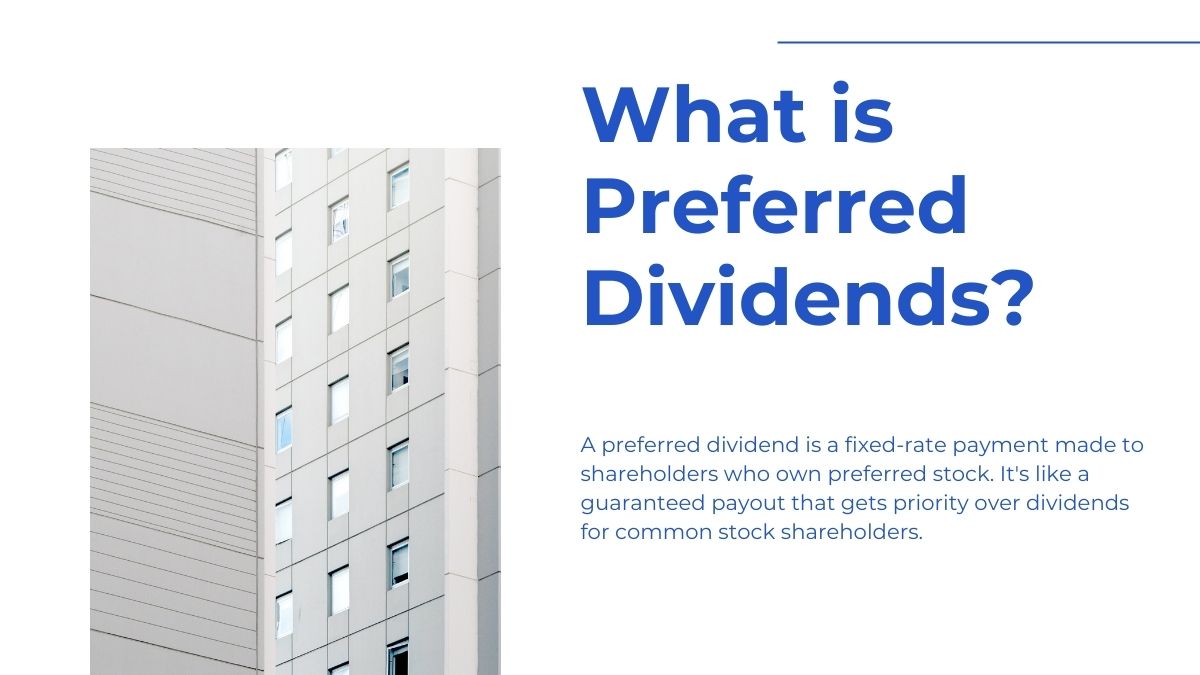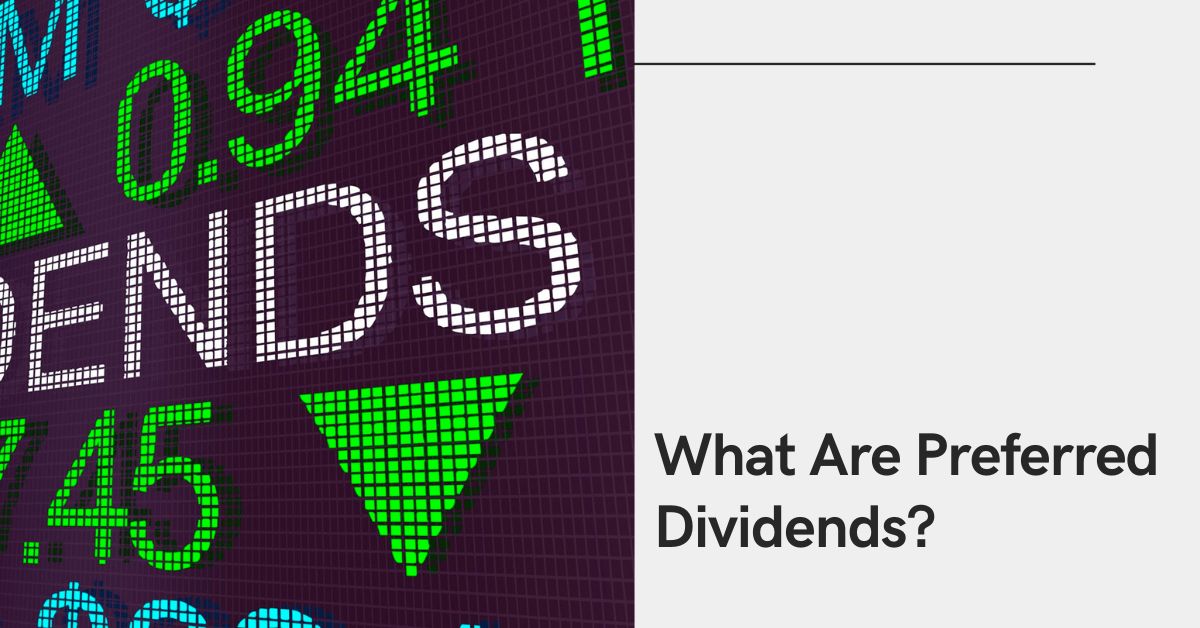One advantage of investments is that they generate passive cash flow. Some companies share a percentage of their net profits with their investors. The distribution of ordinary shares is optional and yields on the market are relatively low.
However, there is a method by which investors can achieve a consistent and high return. Let us define what preferred dividends are and why preferred dividends are important.
What is Preferred Dividends?

A preferred dividend is a fixed-rate payment made to shareholders who own preferred stock. It’s like a guaranteed payout that gets priority over dividends for common stock shareholders.
How to Calculate Preferred Dividend?
Calculating a preferred dividend is a simple method that involves the stock’s par value and dividend rate. Here’s how:
Formula:
Preferred Dividend per Share = Par Value of the Stock x Dividend Rate
Example:
Let’s say a company issues preferred stock with a par value of ₹1,000 and a dividend rate of 5% (expressed as a decimal: 5/100 = 0.05).
Preferred Dividend per Share = ₹1,000 (Par Value) × 0.05 (Dividend Rate) = ₹50.
What is the Difference Between Common Dividend and Preferred Dividend?
Here’s a summary of the main differences between common and preferred dividends:
| Feature | Common Dividend | Preferred Dividend |
|---|---|---|
| Shareholder Type | Paid to holders of common stock | Paid to holders ofpreferred stock |
| Priority | No priority, paid after preferred dividends | Paid first, before common dividends |
| Dividend Rate | Variable, depends on company profits | Fixed rate, usually a percentage of par value |
| Voting Rights | Yes | Typically, no voting rights |
| Stability | Less stable; depends on company performance | More stable, guaranteed payout |
| Growth Potential | Higher potential for capital appreciation | Lower potential for share price growth |
Is preference Dividend Mandatory?
No, preferred dividends are not mandatory. Here’s a breakdown of why:
- Contractual obligation, not guaranteed: While preferred dividends are often considered an agreement between a company and its preferred shareholders, they are not guaranteed.
- Company performance is key: A company can only pay dividends if it generates sufficient profits. If a company is unprofitable or has low profits, it may decide to withhold the dividend to conserve cash.
- Board decision: The final decision to pay dividends, including preferred dividends, is made by the company’s board of directors. It analyzes profitability, cash flow requirements, and future investment plans.
What Happens When Dividends Are Missed?
Missing dividends are handled differently depending on the type of preference shares:
- Non-cumulative preference shares: The company is not obliged to pay missed dividends in future periods.
- Cumulative preference shares: Unpaid dividends accumulate and must be paid in full before common dividends can be paid.
Essentially, preferred shareholders receive a preference over common shareholders in the payment of dividends, but the company is not obligated to pay dividends if it cannot afford to do so.
You can also read these articles:
- What Is EPS? Everything You Need To Know About Earnings Per Share
- What Is Market Capitalization? How To Calculate Market Cap And Understand Company Value
Why Are Preferred Dividends Important?
Preferred dividends are important both for companies issuing shares and for investors seeking special investment opportunities. Here is an explanation of why they’re important:
For companies (issuers):
- Raising capital: Preferred stock allows you to raise capital without diluting ownership as much as issuing common stock. Ordinary shareholders are entitled to vote, whereas preference shareholders generally don’t.
- Attracting certain investors: Preferred dividends are attractive to investors looking for a steady stream of income, especially the elderly or those with low risk tolerance. This can help increase a company’s investment base.
- Tax benefits: In some cases, companies receive tax benefits for paying dividends on preferred stock owned by corporations.
For investors (Holders):
- Predictable income stream: Preferred dividends provide a regular and reliable source of income that is especially attractive to investors seeking a steady return.
- Priority over ordinary shareholders: In the event of liquidation (collapse of the company), preference shareholders receive their share of the assets before ordinary shareholders. This offers a certain degree of security for their investment.
- Lower risk than ordinary shares: Preferred dividends are fixed and senior and offer more stability compared to ordinary dividends, which can fluctuate or even cease altogether.

